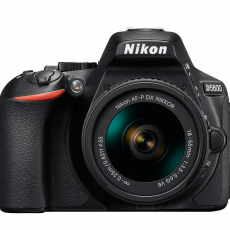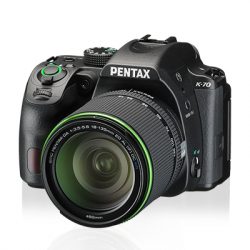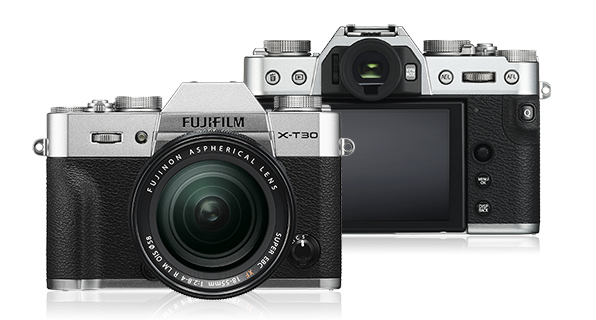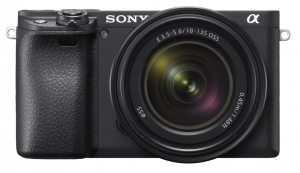5 Great Digital Cameras for Under $1,000
For hobby and social media, these are the cameras to have.
By Mike Bugera | November 1, 2019
It’s been said that a picture is worth a thousand words. In today’s social media world, that’s truer than ever.
For those who actively update their Instagram, Twitter, and Facebook accounts with pictures and videos of their hobbies and business activities, having a camera that can produce high resolution content is essential.
For people using smartphones, taking photos and videos and immediately populating a social media feed is a seamless experience.
But as good as smartphones have become at capturing and processing images, there are times when a digital (DSLR) camera is a favored option. These cameras still hold an advantage over smartphones in many areas:
- Bigger sensors
- Faster autofocus and manual focus capabilities
- The ability to change focal length
- A wide range of interchangeable lenses to fit any situation
- Greater dynamic range
- Better in low light
All of these factors can be important if your feed specializes in photography or video, you crave finer detail in your images, or your social media presence is only one part of your overall business.
But can today’s DSLR imaging technology let you take a thousand-word picture for under a thousand bucks? (After all, it can take a long time to monetize that social media channel!)
Fortunately, the answer to that is a resounding ‘yes’!
In this article, we’ll take a look at five cameras that are high on quality and features yet easy on the wallet. All of these choices take social media creation and integration into account.
First, it will be helpful to know some terminology regarding the inner workings of what makes a great image:
- Image Sensor – This is the device inside the camera that converts the light coming in through the lens into the final image. Two of the most common image sensors in today’s cameras are:
- CCD (Charged Coupling Device)
- CMOS (Complementary Metal-Oxide-Semiconductor)
The one that is featured in all of the cameras presented here is the CMOS.
- Image Sensor Size – The larger the sensor, the more imaging information it can store; and, the higher the price! Sizes include:
- Full Frame (36mm x 24mm)
- APS-H (28.7mm x 19mm) – APS stands for Active Pixel Sensor
- APS-C (23.6mm x 15.8mm)
- Four Thirds (17.3mm x 13mm)
- CX Format (1 inch)
All cameras presented here feature the APS-C size sensor.
- Megapixels – The image sensor is comprised of millions of pixels (one million pixels equals one Megapixel); each of these pixels stores information about the light coming in through the lens and collectively they form the photograph.
To better understand this, think of the style of painting called Pointillism, made popular in the classic work, A Sunday Afternoon on the Island of La Grande Jatte by Georges Seurat. The thousands of dots that make up the larger work of art can be thought of as pixels.
Having a grasp on these technical details, let’s dive into our choice of top five cameras:
- 24.2 Megapixels
- 3.2 inch Vari-angle Touch Screen LCD
- Built-in Wi-Fi, Bluetooth, and NFC (Near Field Communication)
- Full HD 1080p video shooting capability
- Built-in microphone with external stereo microphone port
- 39-point Autofocus tracking
- Battery lasting over 970 shots per charge
- 14.7 oz. (Camera body only)
Like Nikon, Canon has been making digital cameras that have been the industry standard for going on two decades. The Rebel series has always offered great value and features, and the SL2 is an ideal choice for someone looking to enter the world of Canon. Some of the features include:
- 24.2 Megapixels
- 3.0 inch Vari-angle Touch Screen LCD
- Built-in Wi-Fi, Bluetooth, and NFC (Near Field Communication)
- Full HD 1080p video shooting capability
- Built-in microphone with external stereo microphone port
- 9-point Dual Pixel CMOS Autofocus with Phase Detection
- 14.32 oz. (Camera body only)
The 24.2 Megapixels gives you all the resolution you will need for both social media and higher quality photo and video needs.
The Vari-angle Touch Screen LCD allows you to see your shot from all angles, and there’s even an easily accessed Selfie Mode, so you can get the shot even when you are a crew of one.
The SL2 offers helpful menu features such as Feature Assistant, which guides the user through the camera’s shooting modes and explains their effects. There are also two convenient My Menu options that let you dial in your own menu settings for later reference.
As with the Nikon D5600, the Canon EOS Rebel SL2 features built-in Wi-Fi, Bluetooth, and NFC. Using the Camera Connect app, the SL2 can be controlled remotely by a compatible smartphone or tablet. Photos and videos can be directly transferred to smart device, other compatible Canon cameras, social media, and the CANON iMAGE GATEWAY service. Using NFC, you can connect the camera to a compatible Android device or Canon’s Connect Station CS100 by simply touching the camera to the device.
The SL2 also benefits from an extensive line of interchangeable lenses, made by both Canon and third-party companies. This allows you to be able to achieve any focal length needed, from wide angle to telephoto.
Perhaps the most noticeable difference between the Canon and Nikon is the Rebel’s nine points of Autofocus. This is significantly less than the D5600. However, Canon makes up for it with the use of Dual Pixel CMOS Autofocus. This feature is used in Live View mode and utilizes phase detection to determine the subject’s distance to the camera and where the lens should focus. Once locked on, the subject stays in focus even when moving, making this a great feature for shooting both stills and video.
- 24.2 Megapixels
- A dustproof, weather-resistant body, down to -10°C
- In-camera shake reduction (SR) mechanism
- 3.0 inch Vari-angle LCD monitor
- Easy operation of controls, even with gloved hands
- 11-point multi-pattern high speed Autofocus
- Built-in Wi-Fi
- Full HD 1080p video shooting capability
- Built-in microphone with external stereo microphone port
- 4K Interval Movie shooting
- 22.15 oz. (Camera body only)
- 26.1 Megapixels
- 3.0 inch tilting LCD screen
- 4K video recording
- Two types of shutters: mechanical and electronic
- Silent electronic shutter
- Built-in microphone with external stereo microphone port
- Four customizable buttons
- Intelligent Hybrid Autofocus with up to 425 phase-detect points covering entire frame
- Built-in Wi-Fi and Bluetooth
- Compact and lightweight – 11.8 oz. (Camera body only)
Pushing the “under $1,000” to its very limit, the Sony a6400 rounds out our list.
Some of the features of the a6400 include:
- 2 Megapixels
- 95-inch 180° tiltable touchscreen LCD screen
- Silent continuous shooting
- AI-powered Real-time Eye Autofocus
- 425 phase-detection Autofocus points with high-precision Real-time Tracking
- Built-in Wi-Fi, Bluetooth, and NFC
- Eight assignable keys
- 4K video recording capability
- Built-in microphone with external stereo microphone port
Compact and lightweight – 12.66 oz. (Camera body only)
Like all the cameras on this list, the a6400’s resolution will be able to handle your social media feed as well as high-end photos and video. The tiltable LCD screen lets you shoot selfies with or without a crew. Unfortunately, it only articulates 180° to the up position (27° to the down position), not to the side, as with the Nikon, Canon, and Pentax. So, if a light is attached to the hot shoe adapter on the top of the camera, your view of the screen will be blocked.
There’s also the benefit of Real-time Eye Autofocus to keep the subject sharp. This last feature is powered by AI – sounds pretty impressive!
Speaking of Autofocus, this camera offers 425 phase-detection Autofocus points over most of the image, as opposed to the Fujifilm which distributes these points across the entire image. Whether or not this difference is a factor that will offer a better advantage really depends on the situation.
Sony further keeps the subject in focus by using high-precision Real-time Tracking that starts with the whole body of the subject and switches between the face and eyes as the action changes.
Another feature that isn’t often seen is silent continuous shooting, useful for times when the noise of the shutter could be distracting. Only the Fujifilm can match this, with its electronic shutter option. The Nikon and Canon offer silent modes, but they only dampen the sound.
Though Sony doesn’t have the long history of manufacturing DSLRs like the others on this list, they have played an important role in producing professional broadcast video cameras. (I can vouch for this, having come from a 30-year career in the video production industry!) On this point, Sony shines when used for video. Like the Fujifilm X-T30, this camera shoots 4K video. But one advantage it has over its competitor is that there is no limit on the length of your shots, as opposed to the 10-minute limit with the Fujifilm.
The a6400 also offers many different movie modes like slow motion, quick motion, time-lapse, and Super 35mm format.
Image stabilization is only available with certain lenses, not in the camera itself. Fortunately, the 16-50mm lens featured here has image stabilization as do many other Sony and third-party lenses.
This is the most compact camera on our list and weighs just 14.3 ounces when you add the battery and memory card.
Finally, Wi-Fi, Bluetooth, and NFC are built-in, so using Sony’s Imaging Edge Mobile app, you can remotely control and transfer footage to your smart device.
That’s our assessment of the 5 best digital cameras for under $1,000. All in all, it’s hard to go wrong with any of these choices. Imaging technology and manufacturing has improved to the point that you can find a great choice of camera at any price level. The determining factor is deciding what your needs are and finding the camera that best fits your criteria.
Brand preference can also be a strong influence. For me, while I have a tremendous respect for Canon and the other DSLR manufacturers, I have always been drawn to Nikon. There are many reasons for this, tangible and intangible.
Find your tangibles and intangibles. Visit the website links provided and read more about each camera. Then, find a camera shop that has the one you are interested in and get it into your hands. See how it feels to handle it, to dial in the menu features, to trip the shutter, to remove the lens, and anything else you might find yourself using it for.
May each photo be worth a thousand words … and followers!





